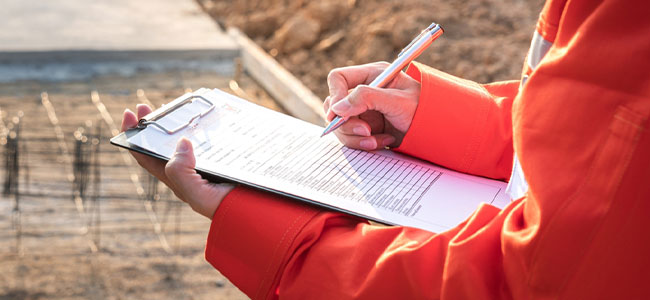
How to Prepare Your Organization for an External Safety Audit
An organization that is well-prepared for such an audit will make the process less stressful and time-consuming for everyone involved.
- By Kendall Kunz
- Dec 29, 2023
Safety audits are a great way to ensure that an organization adheres to the highest safety standards and regulations. They provide an objective assessment of workplace safety protocols, revealing both strengths and areas in need of improvement. This makes them an essential element in any robust safety strategy.
Thorough preparation is the bedrock of a successful external safety audit. An organization that is well-prepared for such an audit will make the process less stressful and time-consuming for everyone involved.
Understand What Is Being Audited
Grasping the scope and criteria of an audit is the first step toward targeted preparation. Organizations can allocate resources more effectively when they understand what aspects of their safety protocols will be under scrutiny. This focused approach ensures that key areas likely to be examined are given the attention they need.
Safety managers should take some time to study and remind themselves of all relevant safety standards and compliance requirements, especially if the organization is pursuing a specific certification.
Being able to anticipate the auditor’s questions and expectations will go a long way in ensuring a smooth audit process. Delving into past audit reports, seeking insights from industry counterparts, reviewing existing safety procedures and being aware of common compliance pitfalls are effective ways to prepare.
Review and Prepare the Necessary Documentation
Comprehensive review and preparation of safety documentation is a vital aspect of audit readiness. This includes the collection and organization of all pertinent safety records, such as:
Ensure their relevance and currency, as up-to-date documentation serves as evidence of compliance.
Documentation should be arranged in a manner that is both accessible and easy for auditors to navigate. Clarity, logical organization and highlighting areas of compliance and improvement will facilitate the auditor’s evaluation process. Making their job easier can lead to a more favorable assessment and a smoother audit experience overall.
Conduct a Self-Audit
A self-audit conducted prior to the external review is the last opportunity to identify and rectify compliance issues. This self-evaluation minimizes non-compliance issues during the external audit and fosters a culture of continuous improvement in safety practices.
Concentrate on areas typically highlighted in external audits: workplace hazards, employee training records and emergency response procedures, to name a few. In addition, organizations should pay attention to inadequate hazard controls, poor record-keeping and insufficient employee safety training, all frequent factors contributing to audit failures.
Focusing on these key areas — as well as rectifying common shortcomings — yields insights into the organization's preparedness, ensuring no major compliance issues are overlooked.
A proper internal audit demands a structured approach. Firstly, it's crucial to assign specific teams or individuals to address each identified area of non-compliance. This delegation ensures accountability and efficiency.
Each team should develop a detailed action plan with clear, measurable goals and timelines. If the audit reveals lapses in safety equipment checks, a designated team should implement a revised equipment monitoring routine immediately.
This approach not only addresses current shortcomings but also instills a proactive culture of safety within the organization, paving the way for continuous improvement and a positive outcome in future external audits.
Prepare Your Staff for the Audit
Preparing employees for the external audit involves briefing them about the process and training them on how to effectively interact with auditors. This preparation should encompass the significance of the audit, their roles in the process and the impact of their responses on the audit outcome. An informed and well-prepared staff minimizes potential confusion and anxiety, leading to a more constructive and efficient audit process.
A good way to do this is by conducting role-specific training sessions prior to the audit. For example, machine operators can get briefed on how to demonstrate safety procedures on their equipment, while administrative staff can be instructed on presenting relevant safety documentation.
Work On Communication And Coordination
Establishing effective communication channels is crucial for synchronizing preparation efforts across the organization. Consistent and clear communication ensures that every department understands its role in the audit process and desired objectives.
Effective cross-departmental coordination also helps in identifying overlapping issues such as inconsistent safety training practices between departments, varied interpretations of safety protocols and discrepancies in record-keeping standards. It can also facilitate the development of integrated solutions, thereby enhancing the overall readiness for the audit.
To adopt a unified approach to the audit, safety managers can implement several actionable strategies:
- First, conduct regular inter-departmental meetings leading up to the audit to align strategies and objectives. Discuss and refine the audit plan, ensuring every department understands and contributes to the overall goals.
- Second, establish a central communication hub, like an intranet site or a dedicated email group, where updates, guidelines and resources related to the audit can be shared. This ensures consistent and timely dissemination of information.
- Lastly, organize joint training sessions for different departments. These sessions can focus on areas such as understanding audit procedures, effective communication with auditors and standardizing safety practices across the organization.
Implementing these strategies strengthens the preparation for the audit. More importantly, it also strengthens a sense of unity and shared responsibility towards safety and compliance.
Preparation Is Key
Achieving a successful audit outcome hinges on meticulous preparation, a deep understanding of audit requirements and a strong commitment to safety. Through diligent preparation, clear communication and a unified interdepartmental approach, organizations can meet compliance standards while building a safer work environment for their workforce.